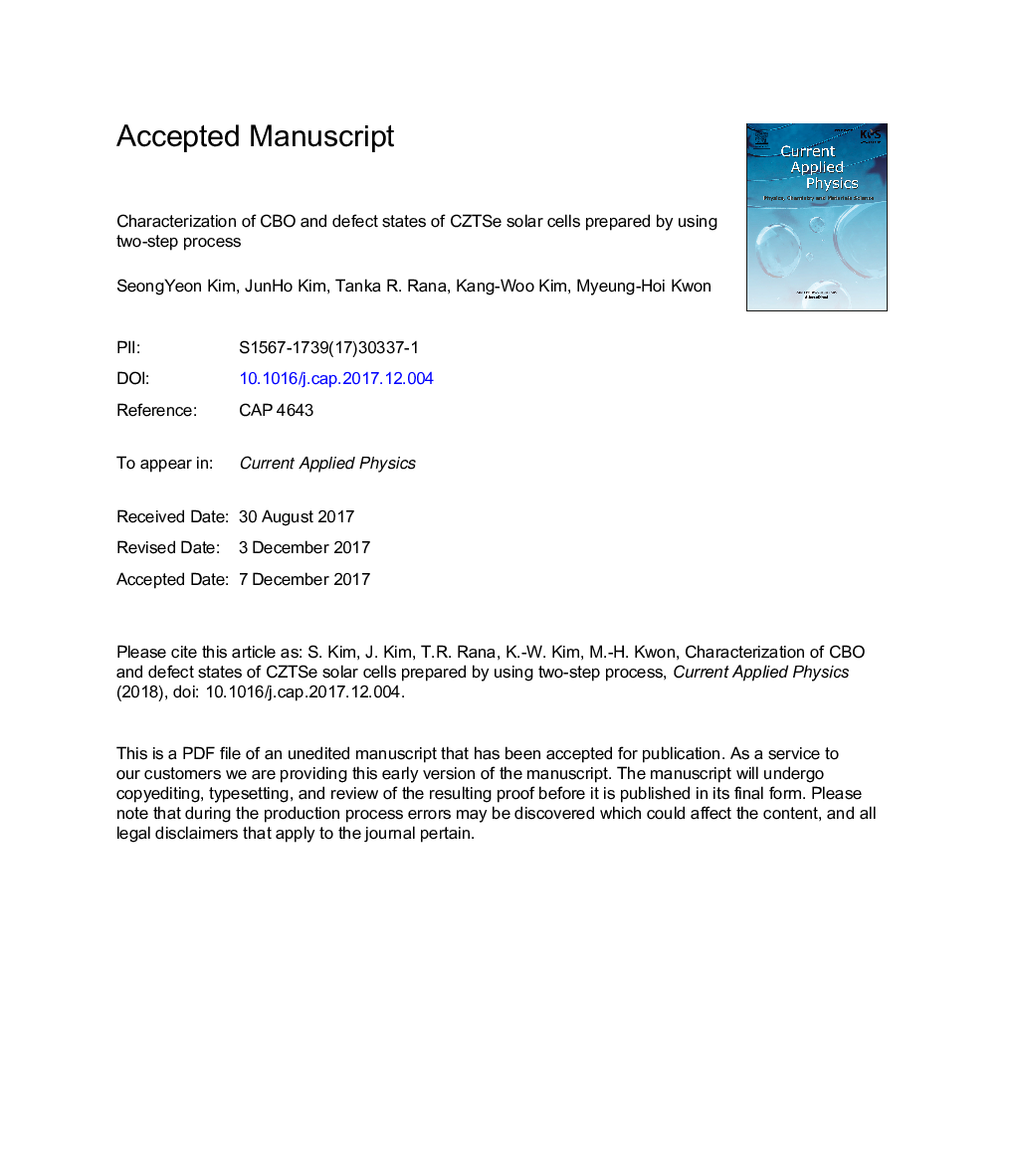| Article ID | Journal | Published Year | Pages | File Type |
|---|---|---|---|---|
| 8148076 | Current Applied Physics | 2018 | 28 Pages |
Abstract
We fabricated kesterite Cu2ZnSnSe4 (CZTSe) solar cells and studied device characteristics, where CZTSe absorbers were made by using two-step process. First, we deposited precursor CZTSe films with spin-coating or sputtering, and performed sulfurization and subsequent selenization. To complete the device, we applied In2S3 as a buffer layer. We obtained power conversion efficiency (PCE) of 4.18% with spin-coated CZTSe absorber and 5.60% with sputtered CZTSe absorber. Both devices showed deep defects in the bulk and strong interface recombinations near the pn junction. In addition, we observed red-kinks in the current density-voltage (J-V) curves for both devices under the filtered light illumination (>660Â nm), which is attributed to large conduction band offset (CBO) between the CZTSe absorber and the buffer layer and defect states in the buffer/CZTSe absorber or in the buffer. The red-kink was also observed in CZTSe (PCE of 7.76%) solar cell with CdS buffer. Hence, to enhance the PCE with CZTSe absorber, along with suppression of deep defects which act as recombination center, optimization of CBO between absorber and buffer is also required.
Related Topics
Physical Sciences and Engineering
Physics and Astronomy
Condensed Matter Physics
Authors
SeongYeon Kim, JunHo Kim, Tanka R. Rana, Kang-Woo Kim, Myeung-Hoi Kwon,
